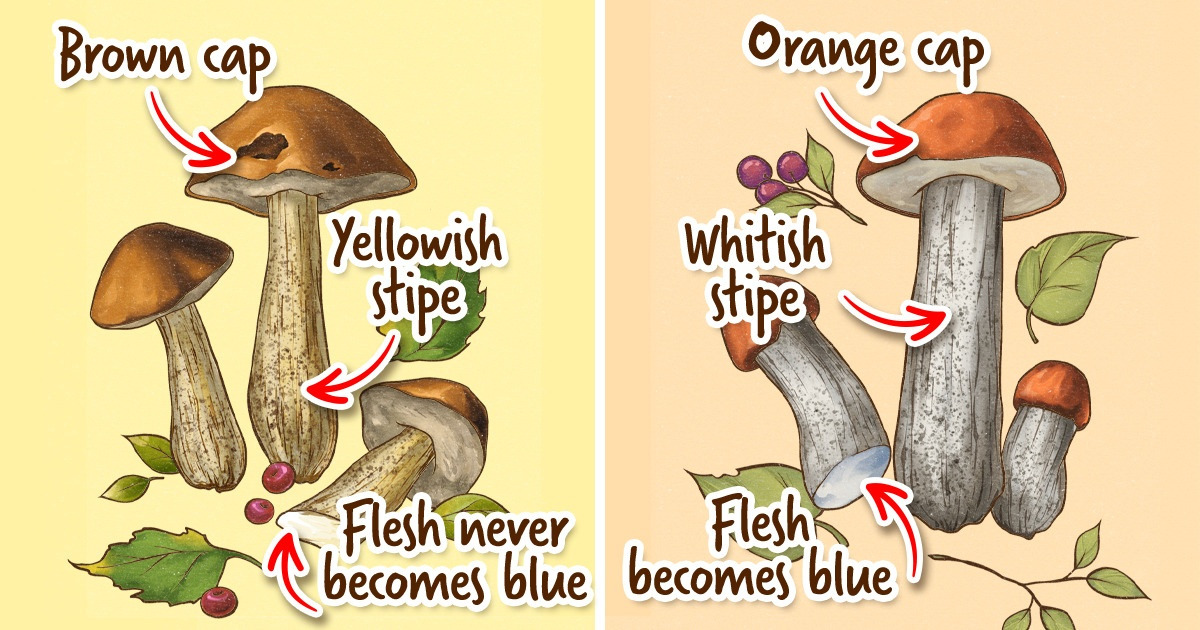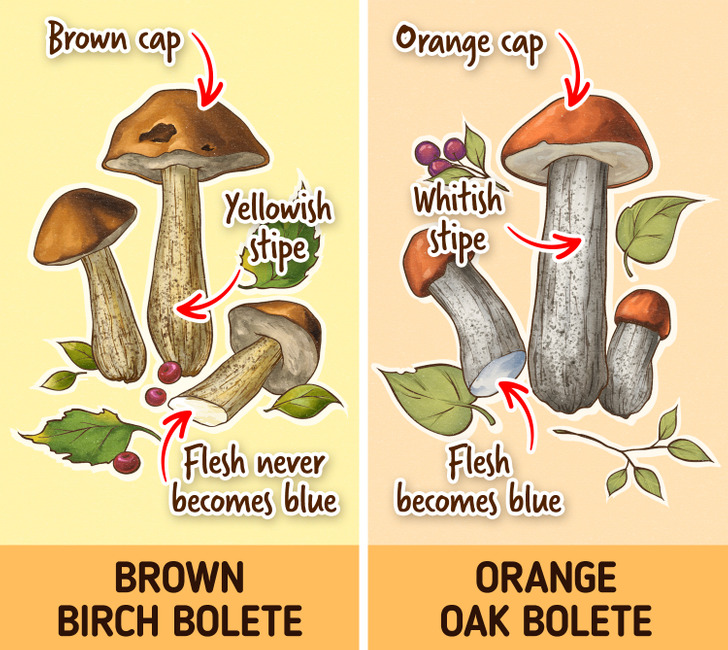How to Distinguish a Brown Birch Bolete From an Orange Oak Bolete

Mushrooms that grow in the woods can look very much alike, especially for beginners. Experienced mushroom pickers know how to distinguish one edible mushroom from another.
In this article, 5-Minute Crafts would like explain how to distinguish a brown birch bolete from an orange oak bolete.
- Cap
The cap of the brown birch bolete can be different shades of brown, sometimes with a red or gray tinge. Its surface is initially slightly velvety, but it becomes smoother with age. At first, the cap has a rounded shape, and later becomes flatter.
The color of the cap of the orange oak bolete can vary from brick red to light brown and orange-red. In young mushrooms, the cap is globose, strongly convex, and slightly tomentose, in more mature mushrooms it’s wide and flattened. - The bottom side of the cap and pores
At a young age, the pores on the cap of the brown birch bolete are whitish, acquiring a gray tint as the mushroom grows older. In old mushrooms, pores dent in strongly around the stipe, and bulge out on the remaining part of the cap. The pore covering is easy to remove from the skin of the cap. When damaged, pores don’t change their color quickly but gradually become a little darker.
The orange oak bolete has small, whitish pores that become olive-brown later. When damaged, pores become pinkish-gray, and then acquire a dark gray tint.

- Stipe
The stipe of the brown birch bolete is thin, white or yellowish-brown, and from 3/8 to 1 3/8 inch in diameter. It has dense whitish flesh at a young age and spongy, more loose, and moist flesh at an old age. The stipes of young mushrooms are barrel-shaped, older mushrooms have thin and elongated stipes, slightly tapering upward. The surface is covered with dark brown scales, which are coarser in the lower part of the stipe.
Young orange oak boletes often have barrel-shaped stipes, which become thicker at the apex than the base with age — tapering toward the cap. The stipe is 3/4—1 1/4 inch thick, but in some cases it can be a little thinner or thicker. The entire surface of the stipe is covered with brownish, woolly scales, which are denser in the lower part of the stipe. As the mushrooms age, the scales become darker. - Color of the stipe flesh
When cut, the stipe of the brown birch bolete remains white or turns pinkish, but never turns blue.
In contrast, when the flesh of the cap and stipe of the orange oak bolete is cut, it becomes dark and slightly blue. - Habitat
The brown birch bolete is an ectomycorrhizal fungus and grows in a mutually beneficial relationship with birch trees.
The orange oak bolete is also an ectomycorrhizal fungus. Most often, it grows under aspens, poplars, and sometimes — under oaks, beeches, and birches.
Share This Article